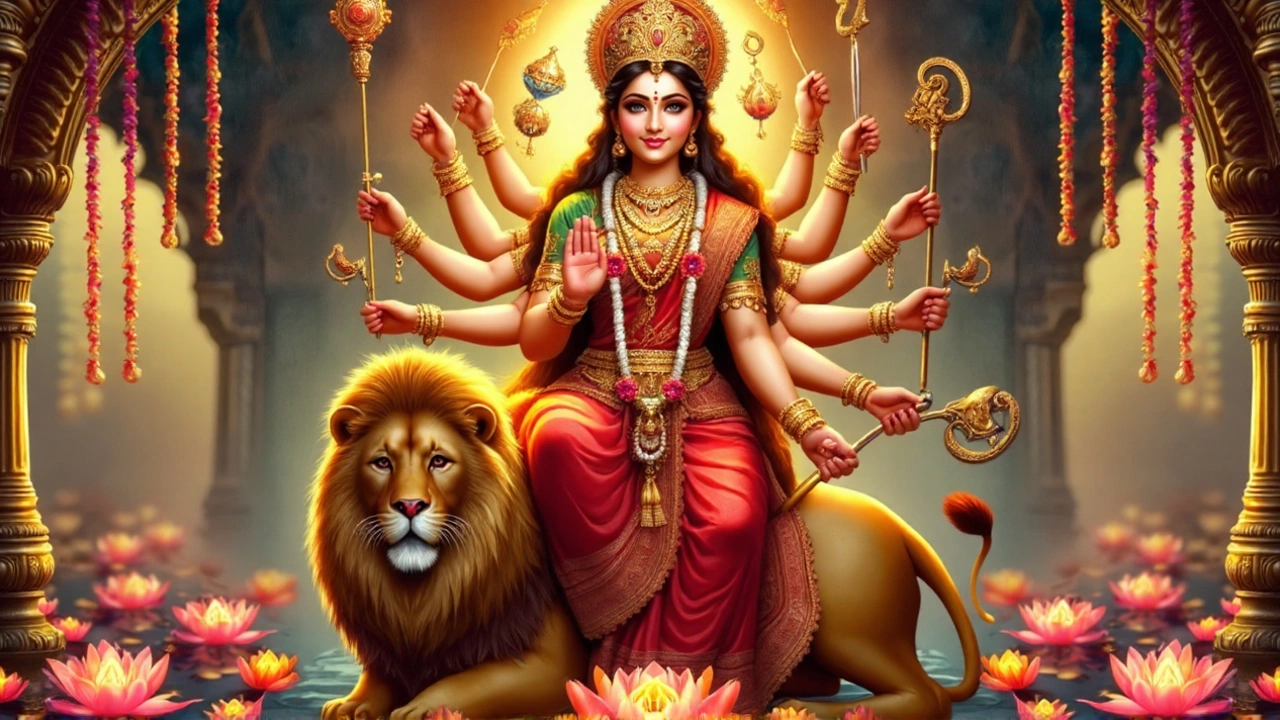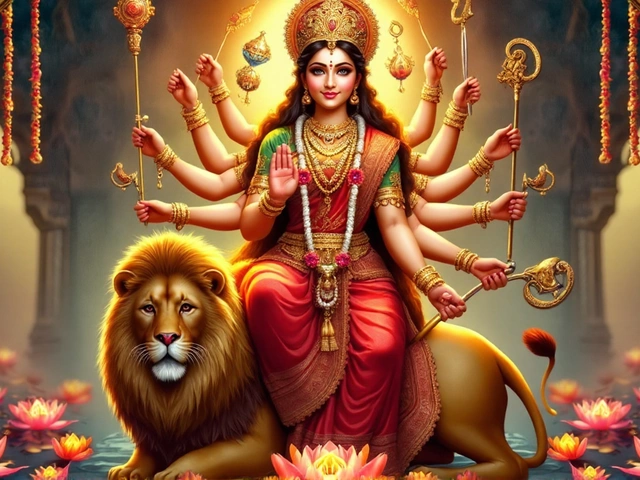Navratri, the nine‑night celebration of the divine feminine, returns this year on October 3, 2024, and runs through Dussehra on October 12. While the rituals, dances and fasting vary across regions, one thread binds the festivities: a day‑by‑day color ritual that mirrors the qualities of each incarnation of Goddess Durga. Wearing the assigned hue is more than a fashion statement; it serves as a visual prayer, aligning the devotee’s energy with the goddess’s power.
Day‑wise Color Guide for Navratri 2024
- Day 1 – Yellow (Shailaputri): Symbolizes happiness, optimism and new beginnings. Yellow garments are thought to draw in prosperity and set a joyful tone for the festival.
- Day 2 – Green (Brahmacharini): Represents growth, fertility and peace. Green invites harmony in relationships and a fresh, rejuvenating mindset.
- Day 3 – Grey (Chandraghanta): Conveys balance, calm and simplicity. Wearing grey helps quiet the mind, fostering emotional equilibrium during worship.
- Day 4 – Orange (Kushmanda): Radiates warmth, enthusiasm and vitality. Orange clothing energises the spirit, matching the goddess’s creative spark.
- Day 5 – White (Skandamata): Stands for purity, serenity and inner peace. White attire creates a tranquil aura, supporting meditation and reflection.
- Day 6 – Red (Katyayni): Embodies passion, courage and strength. Red garments awaken the inner warrior, encouraging decisive action and devotion.
- Day 7 – Royal Blue (Kalaratri): Symbolises wisdom, stability and divine grace. Royal blue fosters deep spiritual insight and trust in the cosmic order.
- Day 8 – Pink (Mahagauri): Reflects universal love, compassion and beauty. Pink attire softens the heart, promoting kindness and harmony.
- Day 9 – Purple (Siddhidatri): Denotes luxury, ambition and spiritual awakening. Purple marks the culmination of the journey, bringing a sense of fulfillment and opulence.
Spiritual Significance and Benefits of Wearing the Colors
The belief that colors carry vibrational frequencies is rooted in ancient Vedic tradition. Each hue is linked to a specific chakra and emotional quality, so when a devotee dresses in the day’s color, they are essentially tuning their own energy to match that of the goddess. This alignment is said to amplify prayers, attract blessings and foster personal growth.
Beyond the metaphysical, the color ritual creates a collective visual harmony at temples, homes and public spaces. When families gather in coordinated shades, the atmosphere turns festive and cohesive, reinforcing community bonds. Many modern celebrations incorporate the palette into decorations, rangoli designs, and even themed sweets, extending the symbolism from clothing to the entire environment.
Psychologically, the act of selecting and wearing a specific color can boost confidence and intention. For instance, donning red on Day 6 can mentally reinforce courage before tackling personal challenges, while a white outfit on Day 5 may help calm a restless mind before meditation.
Practically, the tradition encourages mindful planning. Devotees often prepare wardrobes in advance, weaving fabrics that match the prescribed shades, which adds a layer of preparation and reverence to the festivities. This intentionality transforms everyday dressing into a ritual act of devotion.
Overall, observing the Navratri 2024 colors offers a multifaceted experience: a blend of spiritual alignment, community cohesion, psychological uplift, and cultural expression. As the festival progresses, the evolving palette guides worshippers through a spectrum of emotions, ultimately leading to the profound closure on Day 9, where the regal purple signals both the end of the nine‑day journey and the promise of renewed spiritual vigor for the year ahead.








Write a comment